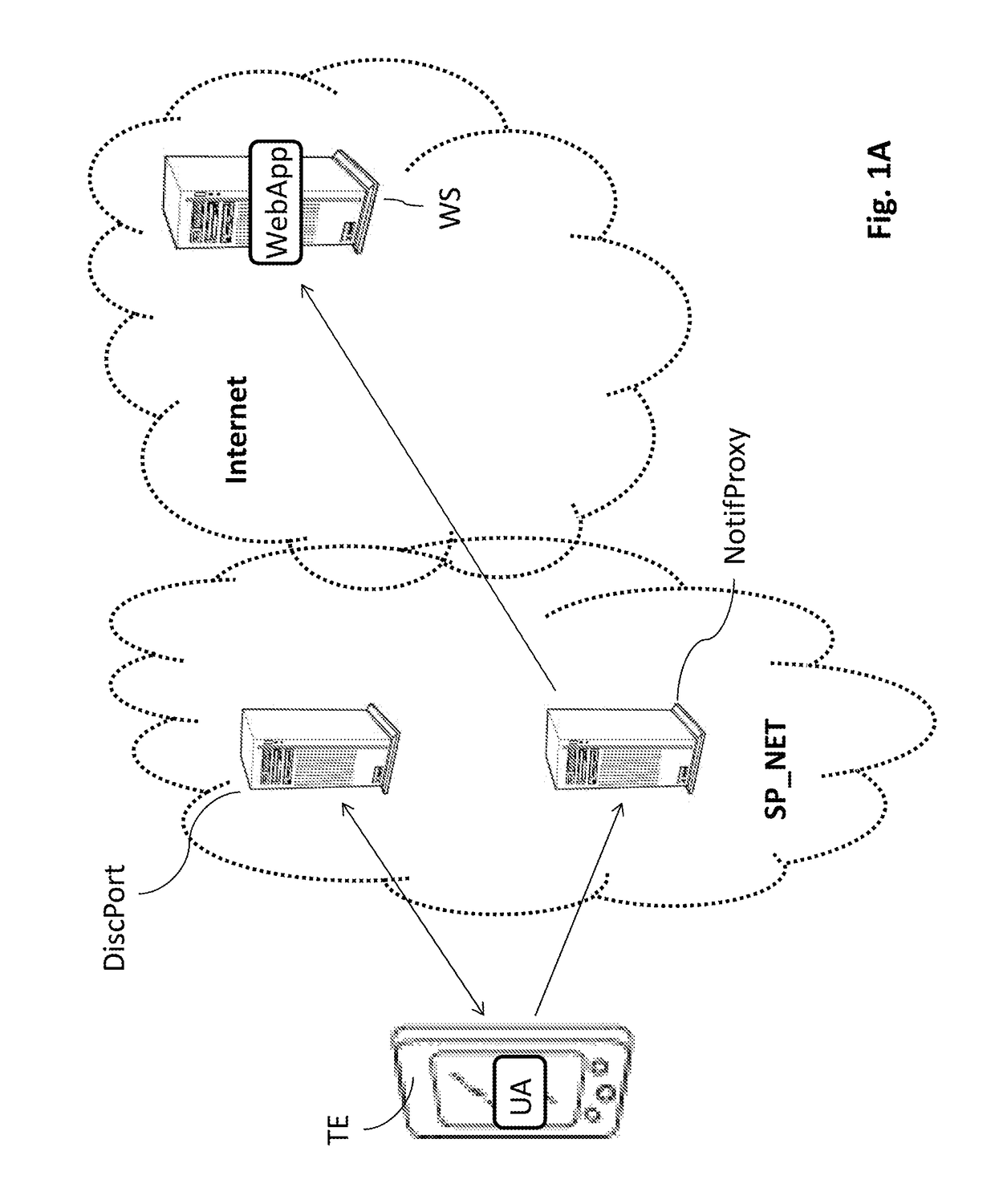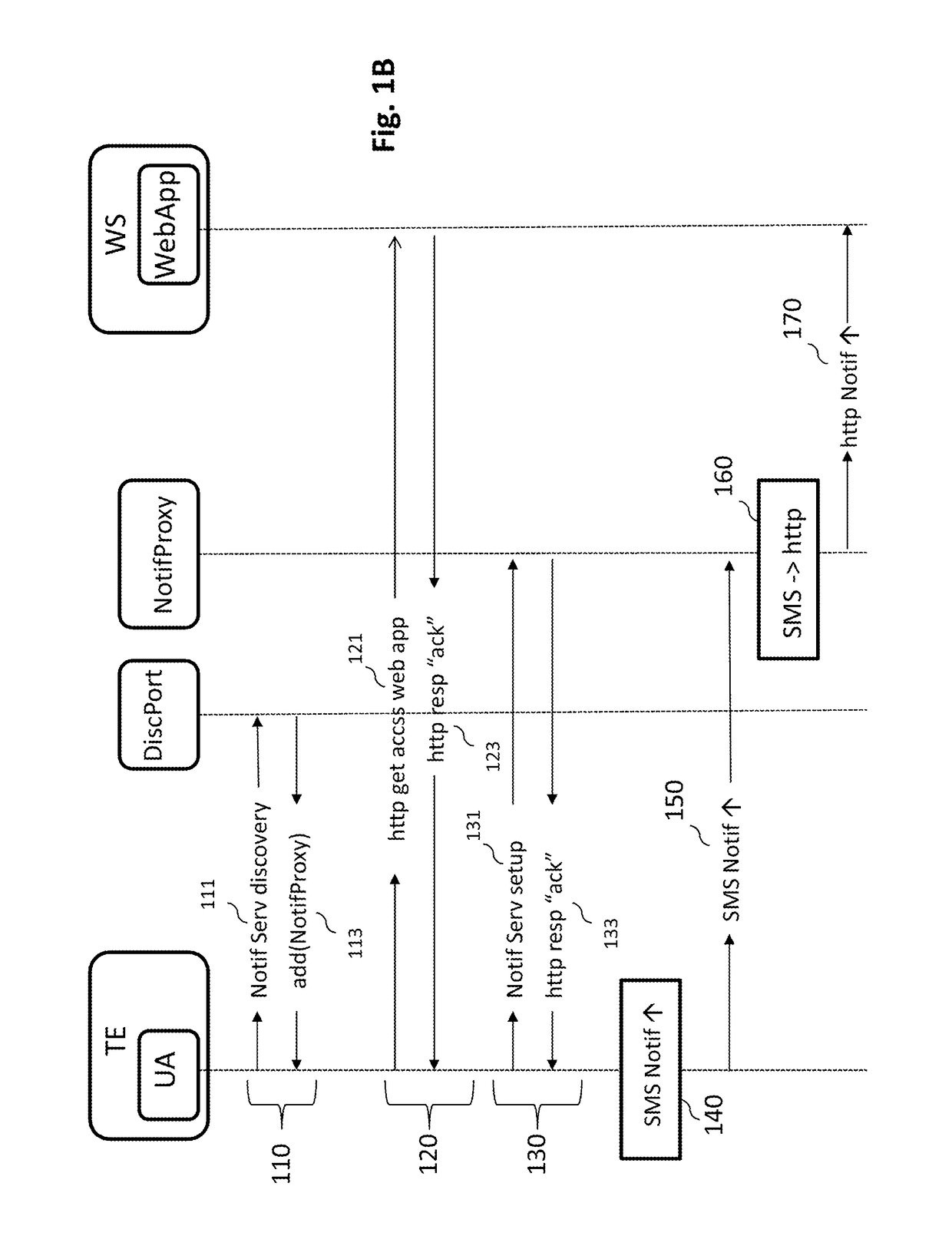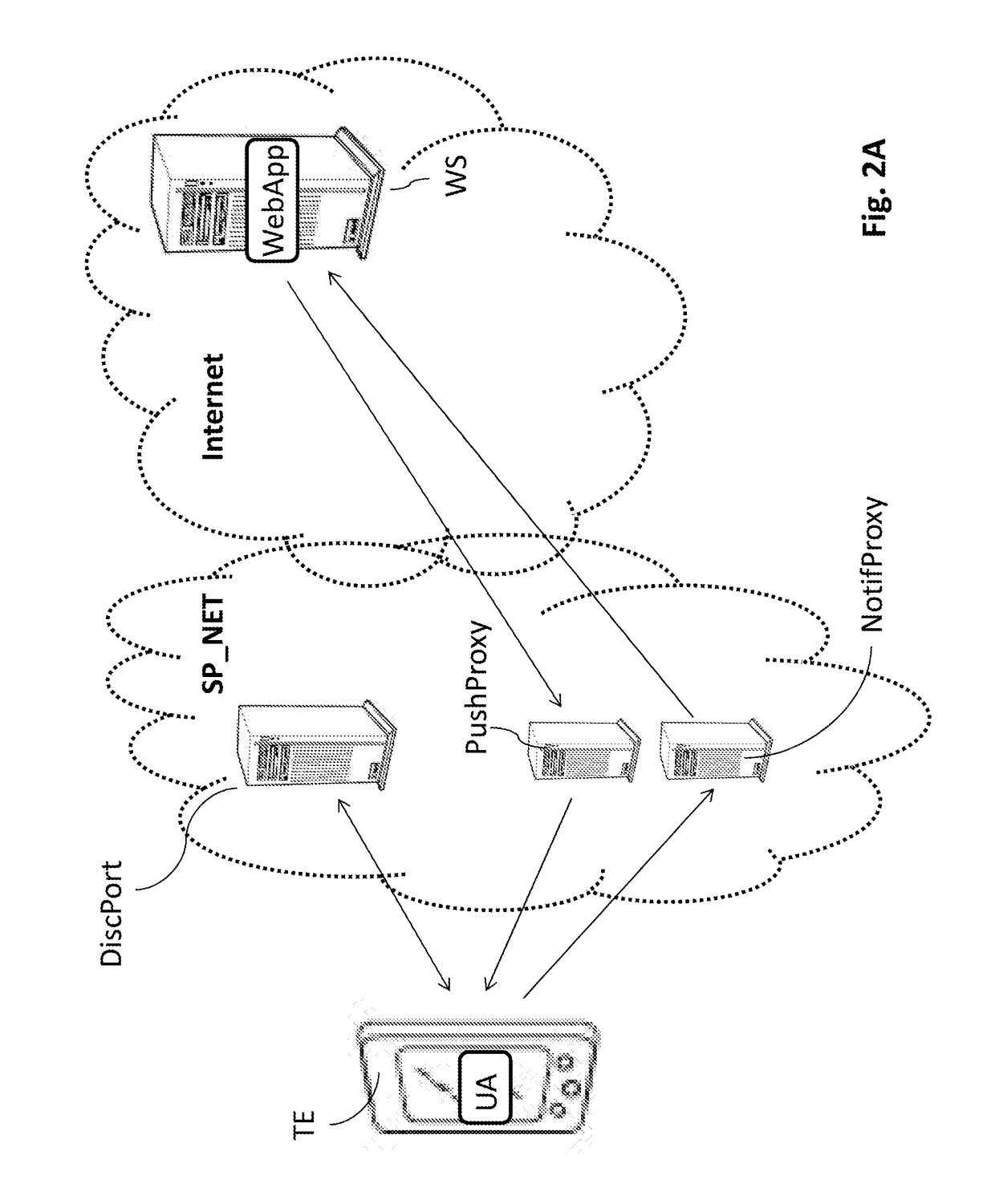Management of notifications in a mobile web application
a mobile web application and notification technology, applied in the field of notification management, can solve the problems of not being suited to a mobile environment, importing practices, and risking further increasing the phenomenon of data and signaling messages exchanged over the network, and achieve the effect of limiting the risks of saturation of a signaling channel
- Summary
- Abstract
- Description
- Claims
- Application Information
AI Technical Summary
Benefits of technology
Problems solved by technology
Method used
Image
Examples
first embodiment
[0052]Reference is made first to FIG. 1A, in which a telecommunications system is represented in which the notification management method according to the present invention can be implemented.
[0053]This system comprises, on the one hand, a mobile terminal TE, typically (but not exclusively) of Smartphone type, comprising, on the one hand, a transceiver module, notably having a radio antenna to exchange messages with a mobile telephony network, and a data processing module (typically a processor associated with a RAM memory and a ROM memory), in which is installed a user agent UA that can be a web browser.
[0054]The user agent UA installed on this mobile terminal TE exchanges data with a web application (designated WebApp) installed on a remote web server (designated WS). Such a web server is configured to receive and transmit requests conforming to a protocol suited to transmission of data over the Internet network (for example the http protocol), which are interpreted by the WebApp ...
second embodiment
[0113]Reference is now made to FIG. 2B which illustrates a notification management method according to the present invention.
[0114]This method begins advantageously with a phase (step 210) of discovery of the two intermediate equipment items NotifProxy and PushProxy, similar to the phase 110 previously described, except that the discovery portal DiscPort returns (step 213) to the mobile terminal TE not only the address add(NotifProxy) of the intermediate equipment item NotifProxy, but also the address add(PushProxy) of the intermediate equipment item PushProxy, in a response message following the reception (step 211) of a discovery request transmitted by the mobile terminal TE. Obviously, in the embodiment where the NotifProxy and PushProxy equipment items are implemented in the form of a single equipment item, a single address is returned to the mobile terminal TE.
[0115]The mobile terminal TE can then request access to the WebApp application installed in the web server WS (step 220...
PUM
 Login to View More
Login to View More Abstract
Description
Claims
Application Information
 Login to View More
Login to View More - R&D
- Intellectual Property
- Life Sciences
- Materials
- Tech Scout
- Unparalleled Data Quality
- Higher Quality Content
- 60% Fewer Hallucinations
Browse by: Latest US Patents, China's latest patents, Technical Efficacy Thesaurus, Application Domain, Technology Topic, Popular Technical Reports.
© 2025 PatSnap. All rights reserved.Legal|Privacy policy|Modern Slavery Act Transparency Statement|Sitemap|About US| Contact US: help@patsnap.com



